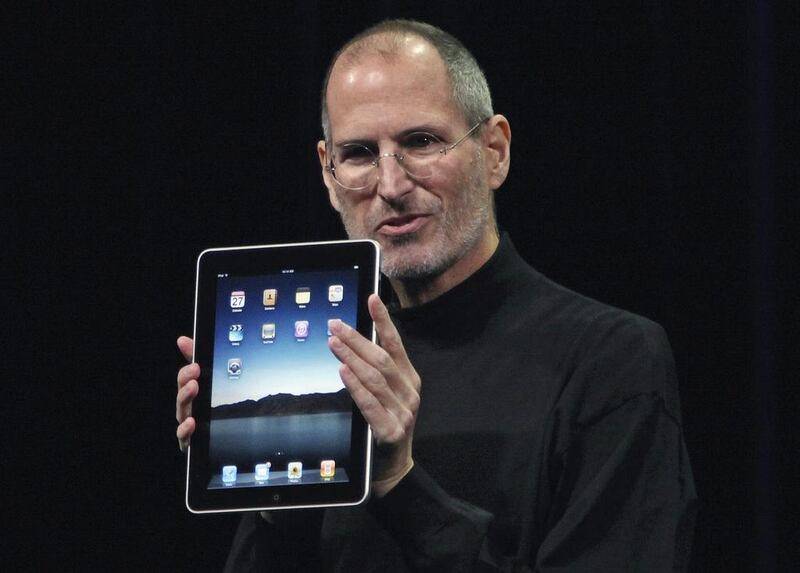Rewind back to the time when the original iPods, iPhones, and iPads were released. Apple was an innovator, a market leader, the brand that every other vendor wanted to emulate, and its revolutionary products went on to shape the technological landscape. Fast forward to today, and the situation is different — Apple has fallen behind and is trying to catch up. And a major contributing factor to Apple's predicament is the size of the displays it uses on its products.
When Apple introduced the iPad in 2010, Steve Jobs touted its 9.7-inch screen as the optimum size for tablets and said his company would not fold to pressure to produce anything differently. As the competition jumped on to the tablet bandwagon, their products were around that screen size or smaller. Samsung, Google and even BlackBerry were producing tablets, some around the 7-inch mark. This led many to wonder if seven was indeed the magic number. These 7-inch tablets were easier to hold, lighter and even more mobile. And so in 2012, Apple gave in to declining shares and mounting market pressure by introducing the highly successful iPad mini, complete with 7.9-inch screen.
The iPad mini was welcomed with rave reviews and even raver sales. With its iPad line up, Apple has continued to improve on all aspects of the devices, from their internal specifications to their screens. It now offers its 9.7-inch iPad and 7.9-inch iPad mini devices with Retina display variants for better viewing, and while IDC research shows that Apple has lost some share of the worldwide tablet sales over recent years, it remains the clear market leader. Rumours are still doing the rounds regarding the possible launch of an iPad Pro — a 12-inch tablet geared toward the commercial space. As Samsung has just released its 12.2-inch Galaxy TabPro, we’ll just have to wait and see how long it takes Apple and others to follow the South Korean company’s lead.
Rewind again and cast your mind back to just how small mobile phones were before the iPhone’s launch. The mobile market was mostly made up of compact devices, with vendors battling it out over who could create the smallest phone. Then came the iPhone with its big-for-a-smartphone 3.5-inch touch-screen display. Competing with Apple’s iOS was the Android army of vendors, who were busy releasing their flagship alternatives to the iPhone. Few made a dent initially, including Samsung, whose tactic was to flood the market with models covering all different form factors, sizes, and prices.
The issue of size is where things took a turn in the smartphone world. Spearheaded by its flagship Galaxy and Galaxy Note lines, Samsung found huge success with larger screen sizes, and has continued to feed on this trend. Smartphones from Sony, LG, HTC, BlackBerry and even Nokia now offer larger screen sizes as they attempt to compete with the Galaxy's 5-inch display and the Galaxy Note's 5.7-inch screen. However, the craze among these Android vendors for large flagship phones left an empty space in the market that was promptly filled by the iPhone 5, which brought with it a much-needed upgrade in terms of screen size; it housed a larger 4-inch screen but still felt great to hold.
This was an area that many Android vendors failed to penetrate with their primary high-spec devices.
Consequently, Samsung, HTC, Sony and others all released mini versions of their flagship smartphones in an attempt to compete directly with Apple. But while we had Android competing with Apple in the 4-inch display range, Apple was still nowhere to be seen in the larger screen segment. That could all change when the iPhone 6 is launched during the second half of 2014. Apple is rumoured to be releasing 4.7- and 5.5-inch variants of the device, alongside the existing 4-inch models, as it seeks to claw market share back from its Android competitors.
Another innovation thought to be coming to the iPhone 6 is the use of a sapphire display that will ultimately replace the Gorilla Glass screens that have been used since the original iPhone. This new glass is said to be substantially more durable than Gorilla Glass; however, critics claim it is also heavier, more expensive, and a damper to the viewing experience. In terms of display resolution, the future of handsets lies in 2k and QuadHD, which will slowly start to trickle out this year and become more evident in the near future.
There is a lot of pressure on Apple to produce and release something truly innovative again. Rumours of an iWatch and an Apple TV only add to the pressure, as the company has generally been late to market in recent years and has failed to wow with its new products. The next major unveiling will be that of the iPhone 6, and it is critical that Apple stops relying on a one-size-fits-all formula. The passage of time and the realities of competition have proven that consumers want options, especially in terms of size. And once Apple realises that size does indeed matter, maybe then its fortunes will turn back around.
Saad Elkhadem is a research analyst at IDC for the Middle East, Turkey and Africa
Follow us on Twitter @Ind_Insights





